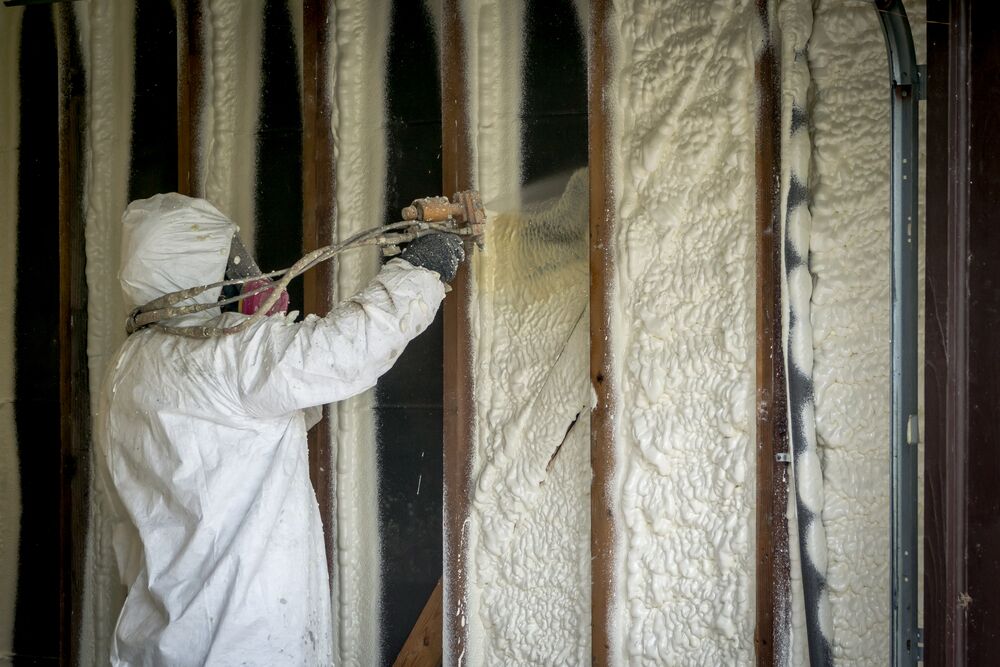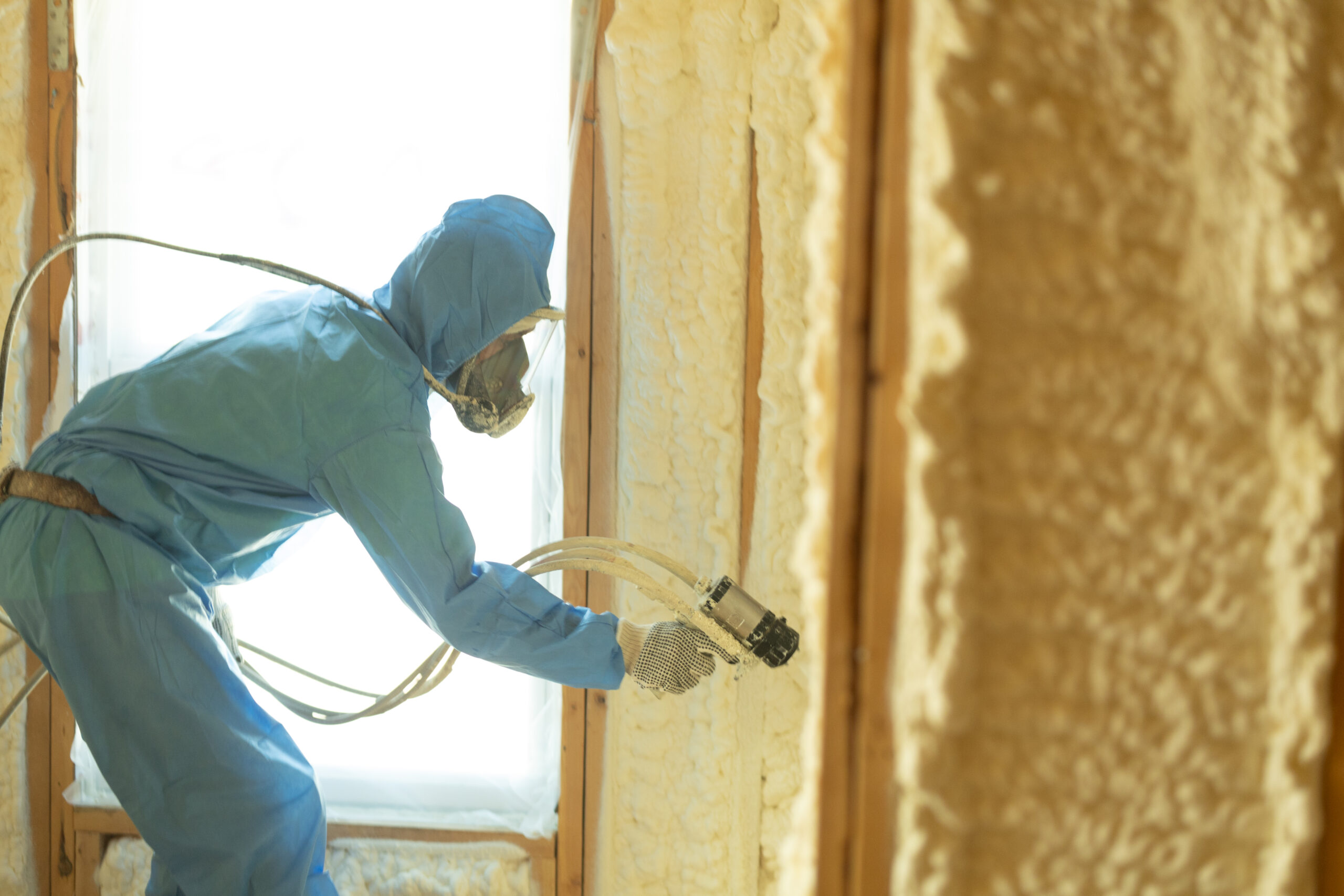The Environmental Impact of Spray Foam: Sustainability Considerations
The Environmental Impact of Spray Foam: Sustainability Considerations
Blog Article
Spray Foam: The Ultimate Remedy for Air Sealing and Insulation
Spray foam insulation has become a leading remedy for effective air securing and thermal insulation, using a special mix of properties that set it apart from conventional methods. Its capacity to expand and fill up voids makes it particularly reliable in stopping air leak, which can dramatically affect power performance. Understanding the complete scope of its benefits, installment procedures, and comparisons with other insulation types is crucial for making educated decisions. As we discover these elements, the implications for both brand-new building and constructions and retrofits become progressively significant. What variables should influence your selection?
What Is Spray Foam?
Spray foam is a versatile insulation material that combines the concepts of air sealing and thermal resistance to improve energy effectiveness in buildings. Composed mostly of polyurethane or other similar compounds, spray foam is used as a liquid that increases upon call with surface areas, producing a strong, continuous layer of insulation. This unique property permits it to load voids, fractures, and voids that traditional insulation products might neglect, supplying a superior air seal.
There are two primary kinds of spray foam: open-cell and closed-cell. Open-cell spray foam is lighter and a lot more adaptable, providing excellent audio absorption and a reduced R-value per inch - Spray Foam. On the other hand, closed-cell spray foam is denser, offering a greater R-value, dampness resistance, and included architectural integrity to developing parts
The application process commonly involves specialized devices, ensuring a smooth application that adheres to various substratums, consisting of concrete, wood, and metal. This flexibility makes spray foam appropriate for both new constructions and retrofitting existing structures. Its capability to develop an impermeable obstacle considerably adds to minimizing energy consumption and improving interior air top quality, thereby making it a preferred choice amongst building contractors and property owners alike.
Benefits of Spray Foam Insulation
One of one of the most substantial benefits of spray foam insulation is its exceptional ability to create a continual air barrier, which effectively minimizes power loss. Unlike conventional insulation products, spray foam increases to fill spaces and cracks, guaranteeing that air leakage is considerably reduced. This characteristic not just improves power effectiveness however additionally results in reduce energy expenses in time.
In addition, spray foam insulation supplies remarkable thermal resistance, contributing to a more secure interior environment. Its high R-value per inch enables efficient insulation in restricted rooms, making it ideal for attic rooms, wall surfaces, and crawl areas. The moisture-resistant buildings of spray foam aid avoid mold and mildew and mildew growth, promoting much healthier living conditions.
An additional essential advantage of spray foam insulation is its sound-dampening high qualities (Spray Foam). It efficiently minimizes noise transmission in between spaces, developing a quieter and a lot more comfortable home atmosphere. The longevity of spray foam likewise stands apart, as it does not droop or clear up in time, maintaining its efficiency throughout its life expectancy
How Spray Foam Works
Recognizing how spray foam insulation works is crucial for appreciating its effectiveness in air securing and thermal resistance. Spray foam insulation is composed of 2 main parts: isocyanate and polyol material. When these elements are combined, they undergo a chain reaction that creates the material to expand swiftly, creating a thick foam that fills up dental caries, cracks, and gaps.
As the foam expands, it complies with surface areas, creating an impermeable seal that considerably minimizes air seepage. This particular makes spray foam insulation extremely reliable at avoiding drafts and wetness infiltration, which can cause power loss and damages with time. Furthermore, the closed-cell variant of spray foam provides superior thermal resistance because of its inflexible framework, effectively minimizing warmth transfer.
The distinct residential or commercial properties of spray foam allow it to satisfy irregular surface areas, guaranteeing comprehensive protection and a seamless obstacle. Because of this, spray foam insulation not just enhances energy performance but additionally adds to boosted indoor air top quality by decreasing the buildup of contaminants and irritants. Inevitably, understanding the auto mechanics behind spray foam emphasizes its role as a remarkable choice for insulation and air sealing in both commercial and property applications.
Installation Process Overview

Prior to installation, the space should be adequately cleaned and prepped, making sure that surface areas are free from dust, wetness, and debris. This step is vital due to the fact that impurities can endanger attachment and total efficiency. When the location is prepared, the application entails blending both elements of the spray foam, which increases get more upon call and fills up spaces properly.
Educated specialists need to perform the installment, using specific equipment to make sure consistent protection and ideal density. Safety precautions, consisting of using protective gear and guaranteeing proper air flow, are imperative throughout this process. After application, the foam commonly treatments swiftly, developing a strong obstacle that enhances power efficiency.
Comparing Spray Foam to Typical Insulation
When evaluating insulation alternatives, spray foam insulation stands out in comparison to standard products such description as fiberglass and cellulose. Unlike fiberglass and cellulose, which can allow air infiltration, spray foam increases upon application, loading voids and holes to develop an impermeable seal.
Furthermore, spray foam gives a greater R-value per inch than typical insulation types, supplying even more effective thermal resistance in a thinner profile. This characteristic is specifically useful precede with minimal cavity depth. Spray foam is resistant to moisture and mold and mildew growth, which can be a substantial concern with cellulose and fiberglass, particularly in damp atmospheres.
Nevertheless, spray foam insulation normally lugs a higher in advance expense than its standard counterparts. House owners need to evaluate this preliminary investment against long-term power financial savings and efficiency benefits. Ultimately, while both insulation types offer their function, spray foam emerges as a more advanced remedy for modern-day insulation requirements, especially in regards to air securing and thermal performance.

Conclusion
In recap, spray foam insulation stands for a highly efficient remedy for achieving ideal air securing and thermal resistance. Its unique residential properties, consisting of moisture resistance and audio dampening, make it suitable for different applications in both brand-new building and constructions and retrofitting projects (Spray Foam). The first prices may be greater compared to standard insulation materials, the long-lasting advantages, such as considerable energy cost savings and improved indoor air quality, justify the financial investment and emphasize its i loved this worth in modern-day structure methods.
Spray foam insulation has emerged as a leading solution for effective air sealing and thermal insulation, offering an unique mix of homes that set it apart from typical approaches.Spray foam is a functional insulation product that integrates the principles of air securing and thermal resistance to boost energy efficiency in structures.When reviewing insulation choices, spray foam insulation stands out in comparison to conventional materials such as fiberglass and cellulose. Inevitably, while both insulation types serve their objective, spray foam emerges as a more innovative option for contemporary insulation demands, specifically in terms of air sealing and thermal performance.
In recap, spray foam insulation stands for a very efficient solution for accomplishing optimal air securing and thermal resistance.
Report this page